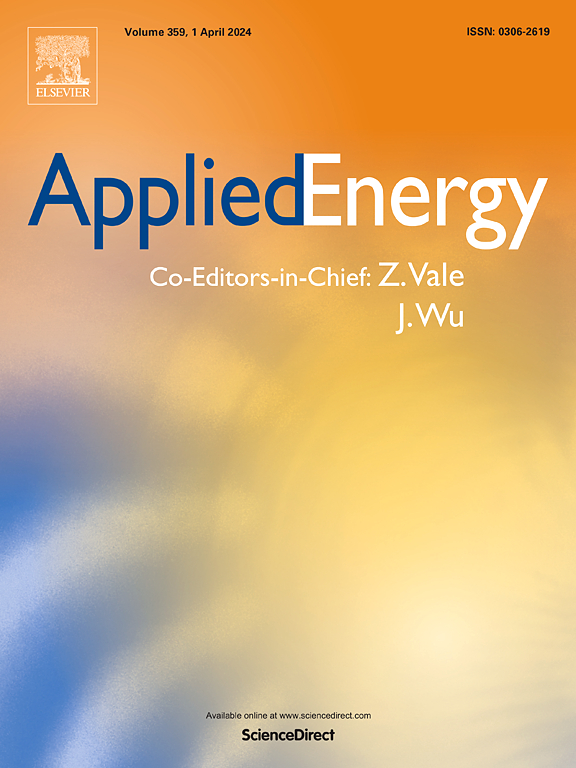探索电力系统优化的和谐搜索:应用、公式和开放问题
IF 11
1区 工程技术
Q1 ENERGY & FUELS
引用次数: 0
摘要
现代电力系统必须优化可再生能源集成、快速增长的分布式资源以及严格的可靠性和效率目标所带来的大规模、非线性、多目标问题。在这种情况下,传统技术往往会出现问题,而和谐搜索(HS)则显示出了强大的潜力。与早期HS调查不同,本综述对HS在电力系统中的应用进行了结构化的综合,并关注了HS模型中的目标函数和约束是如何制定的。它涵盖了系统级操作(例如,经济调度,最优潮流,机组承诺,可再生规划)和设备级控制(例如,负载频率调节和电力系统稳定)。比较结果表明HS在满足成本、排放和可靠性目标方面的通用性,并揭示了相对于其他元启发式方法,精心制定的方案可以提高收敛性和解决方案质量的场景。在参数自适应、与人工智能模型的杂交以及减轻敏感性和过早收敛的约束处理方案方面,提炼了实用指导。剩下的挑战包括不一致的建模实践和有限的实时或非常大的网络的可扩展性。推荐的补救措施包括标准化HS配方和自动参数调整,以提高再现性和性能。该报告总结了与数字孪生环境集成的不确定性感知、可解释的HS框架的未来愿景,为下一代电力系统优化制定了明确的议程。本文章由计算机程序翻译,如有差异,请以英文原文为准。
Exploring harmony search for power system optimization: applications, formulations, and open problems
Modern power systems must optimize large-scale, nonlinear, multi-objective problems created by renewable integration, rapidly growing distributed resources, and strict reliability and efficiency targets. Conventional techniques often falter under these conditions, whereas Harmony Search (HS) has shown strong potential. Unlike earlier HS surveys, this review provides a structured synthesis of power system applications of HS, with attention to how objective functions and constraints are formulated in HS models. It covers both system-level operations (e.g., economic dispatch, optimal power flow, unit commitment, renewable planning) and device-level control (e.g., load frequency regulation and power system stabilization). Comparative results demonstrate HS’s versatility in meeting cost, emission, and reliability goals, and reveal scenarios where careful formulation improves convergence and solution quality relative to other metaheuristics. Practical guidance is distilled on parameter self-adaptation, hybridization with artificial intelligence models, and constraint-handling schemes that mitigate sensitivity and premature convergence. Remaining challenges include inconsistent modeling practices and limited scalability for real-time or very large networks. Recommended remedies encompass standardized HS formulations and automated parameter tuning to improve reproducibility and performance. The review concludes with a future vision of uncertainty-aware, explainable HS frameworks integrated with digital-twin environments, charting a clear agenda for next-generation power-system optimization.
求助全文
通过发布文献求助,成功后即可免费获取论文全文。
去求助
来源期刊

Applied Energy
工程技术-工程:化工
CiteScore
21.20
自引率
10.70%
发文量
1830
审稿时长
41 days
期刊介绍:
Applied Energy serves as a platform for sharing innovations, research, development, and demonstrations in energy conversion, conservation, and sustainable energy systems. The journal covers topics such as optimal energy resource use, environmental pollutant mitigation, and energy process analysis. It welcomes original papers, review articles, technical notes, and letters to the editor. Authors are encouraged to submit manuscripts that bridge the gap between research, development, and implementation. The journal addresses a wide spectrum of topics, including fossil and renewable energy technologies, energy economics, and environmental impacts. Applied Energy also explores modeling and forecasting, conservation strategies, and the social and economic implications of energy policies, including climate change mitigation. It is complemented by the open-access journal Advances in Applied Energy.
 求助内容:
求助内容: 应助结果提醒方式:
应助结果提醒方式:


